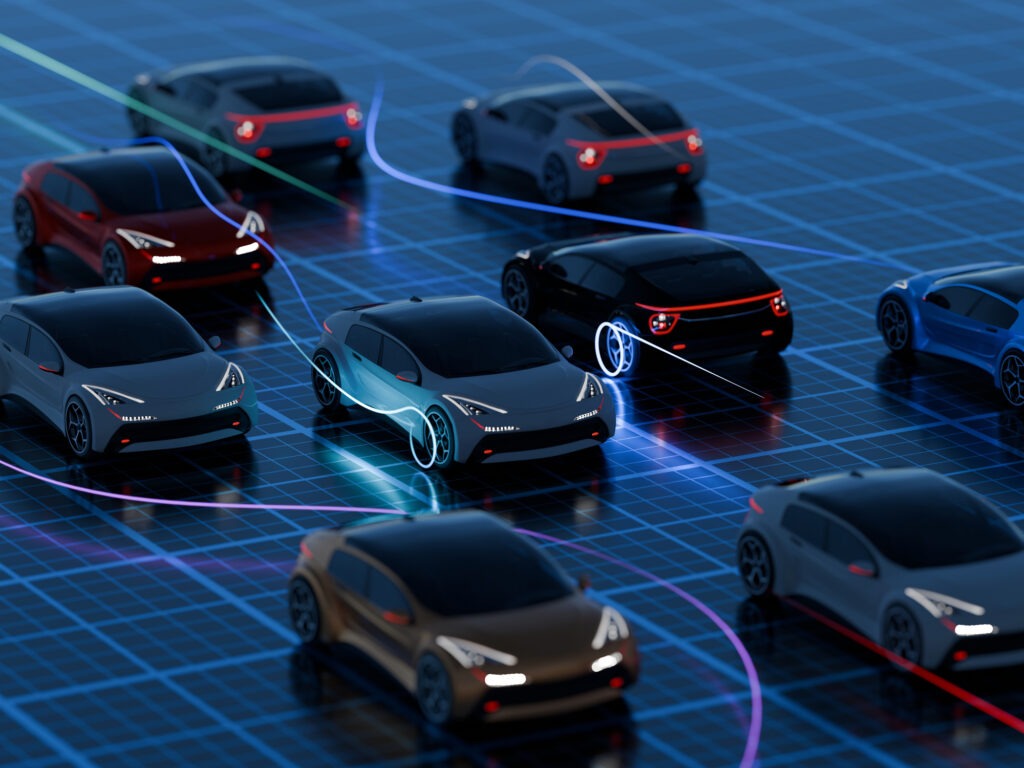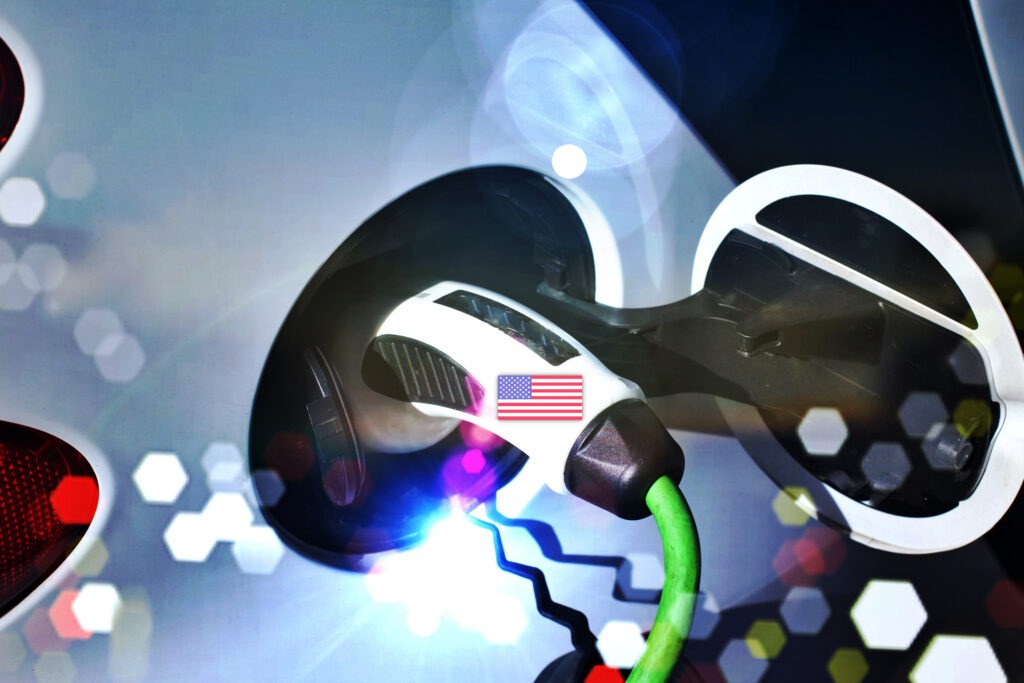CES 2025: Are self-driving cars still relevant?
15 January 2025

What did CES 2025 reveal about the progress of self-driving technology? Autovista24 editor Tom Geggus unpacks some of the biggest autonomous developments from the event.
The buzz around self-driving cars has dissipated in the last few years. Once a mainstay of discussions at various automotive events, autonomous vehicles have begun to feel less relevant.
The technology seems to have spent a while in Gartner’s trough of disillusionment. Disenchantment around autonomous systems has also been impacted by reports of collisions and company cautiousness.
However, self-driving cars still carry some momentum and might even make it up the ‘slope of enlightenment’. This is where the societal benefits of the technology start to become more widely understood.
In the second half of 2024, S&P Global Mobility reported a comparative surge of autonomous vehicle advances in China. The US also saw positive technological developments. At the start of 2025, CES offered an opportunity for an update from some of the industry’s major autonomous advocates.
Self-driving CES
Automotive technology was defined by software at CES 2025, with the latest concepts featuring astounding new capabilities. To achieve these new heights, carmakers have turned to technology titans like Nvidia.
Hyundai Motor Company confirmed it will work with the company to advance its integration of AI. The carmaker will tap into Nvidia’s computing capacities, allowing it to manage the large amounts of data needed to train its advanced AI models. This in turn will help with the building of an autonomous-vehicle software stack.
The Korean manufacturer will work with Nvidia to create simulated environments to develop autonomous systems. Simulations provide a safe way to test autonomous vehicles in any possible weather, traffic, location as well as dangerous scenarios.
‘Hyundai Motor Group is exploring innovative approaches with AI technologies in various fields such as robotics, autonomous driving and smart factories,’ said Heung-Soo Kim, executive vice president and head of the global strategy office at Hyundai Motor Group. ‘This partnership is set to accelerate our progress, positioning the Group as a frontrunner in driving AI-empowered mobility innovation.’
Nvidia is stacking up automotive customers. Its founder and CEO Jensen Huang explained at CES how his company is now working with nearly every major carmaker. Discussing autonomous vehicle collaborations, he mentioned, BYD, Tesla, JLR, Toyota, Mercedes-Benz, Waymo, and Zoox.
‘The autonomous vehicle revolution is here,’ Huang said. ‘Building autonomous vehicles, like all robots, requires three computers: Nvidia DGX to train AI models, Omniverse to test drive and generate synthetic data, and Drive AGX, a supercomputer in the car.’
Road ahead for self-driving cars
Mobileye returned to CES, with President and CEO Amnon Shashua, mapping out the road ahead for autonomous technology. He explained that these systems have two key development axes.
One of these is precision, effectively how safe a system is. This can be measured by the mean time between failures (MTBF), so how much time passes between each incident.
‘What would be the sufficient MTBF for an eyes-off system? At least tens of thousands of hours of driving. When we talk with OEMs, there are much bigger numbers being thrown, one million hours, 10 million hours,’ Shashua said.
On the other axis is recall, covering when an autonomous system can operate. Higher recall is available when self-driving technology has wider operational parameters. Geographical scalability is important too, considering how good an out-of-the-box system is at adapting to a new location. Then there is cost, including the funds needed for building and maintenance.
Shashua said that Waymo is racing up the precision axis, while Tesla pushes further ahead with recall. This approach leaves both companies needing to advance along the opposing axis to reach SAE Level 5 Autonomy at scale.
A third way
Meanwhile, Mobileye is following a third school of thought. Its eyes-on, hands-of SuperVision assisted-driving platform has moved along the recall axes. It is scheduled to reach the end of this path next year.
In parallel, Chauffeur, Mobileye’s eyes-off autonomy for consumer-owned vehicles will focus on precision. ‘On highways, it is going to be a very useful system. 130kph driving, autonomous lane changes. It is an eyes-off system,’ Shashua said. ‘You can do something else in the car, you can work on your smartphone, you can do something else.’
Chauffeur is set to become more powerful in the coming years with more sensor capabilities, lidar, and an imaging radar.
A continental approach
Continental brought its modular and scalable advanced driver-assistance system (ADAS) portfolio. The system is reportedly capable of managing high complexity with its birds-eye fusion technology. A full-stack partnership with Ambarella powers the system.
The supplier has also sought to help OEMs reduce components and improve vehicle aesthetics. Accordingly, it has developed radar-based parking solutions while maintaining high-speed ADAS features. This has meant using existing surround-range radars while removing ultrasonic sensors.
Continental, Aurora and Nvidia also announced a new strategic partnership to deploy driverless trucks at scale. Continental plans to mass-manufacture the Aurora Driver, an SAE Level 4 autonomous driving system for trucking, in 2027. The system features Nvidia’s Drive Thor and DriveOS technology.
‘Delivering one driverless truck will be monumental. Deploying thousands will change the way we live,’ said Chris Urmson, CEO and co-founder of Aurora. ‘Nvidia is the market leader in accelerated computing, and they will strengthen our ecosystem of partners and our ability to deliver safe and reliable driverless trucks to our customers at scale.’
Commercial and competitive advances
Elsewhere in the commercial automotive world, John Deere revealed several new autonomous machines. These are built to support customers in agriculture, construction, and commercial landscaping.
The autonomous lineup included the 9RX tractor for large-scale agriculture, the 460 P-tier articulated dump truck for quarry operations and a battery-electric mower for commercial landscaping.
At the other end of the scale, the Indy Autonomous Challenge (IAC) achieved a world first for high-speed competitive autonomy. The Las Vega Motor Speedway saw the first successful completion of a multi-car autonomous race.
‘Our goal has always been multi-agent racing, so being the first to have all our AI drivers complete a race and do so with five overtakes, no accidents, and a nose-to-nose finish is a testament to the progress of the IAC’s global ecosystem of highly talented university researchers, industry partners, and government supporters,’ said Paul Mitchell, IAC president and CEO.
Simulation step up at CES
When it comes to developing autonomous systems, Here Technologies announced the introduction of SceneXtract. Built alongside Amazon Web Services (AWS), the software aims to simplify and speed up the creation of real-world environments. Manually searching, locating, and converting real-world environments into simulation-ready scenes for ADAS and automated vehicles is time-consuming.
‘SceneXtract marks a significant milestone in ADAS and automated driving development, providing developers with a powerful tool to reduce the time, cost and complexity of simulating real-world scenarios,’ said Remco Timmer, vice president of product management at Here Technologies.
‘By utilising the Here HD live map and AWS’s AI-powered search capabilities, SceneXtract enables more efficient and accurate testing, allowing manufacturers to bring safer, more advanced autonomous driving technologies to market faster,’ Timmer added.
The race to automate
While this progress is a positive sign for self-driving vehicles, it is being spearheaded by certain countries. Maria Alonso, autonomous systems lead at the World Economic Forum, highlighted at CES how the US and China are leading development.
‘I would say the US is really at the forefront when we think about these deployments, together with China. One of the reasons why the two countries are going to continue being at the forefront is because it is a race. It is a race with the US against China in vehicle autonomy,’ she said.
Meanwhile, progress in other regions like Europe can be expected to take longer. This is because some of the largest players currently working on self-driving cars are not active in the region. Additionally, with so many different countries in Europe, each having its own regulations, it is far harder for developers to make strides like they would in the US and China.
A Deloitte study considered an easing regulatory environment that may aid the deployment of autonomous vehicles in some global markets. However, more than half of surveyed consumers in India, the UK and the US remained concerned about safety.
So, as autonomous vehicles continue to develop, the challenges ahead are clear. Companies will need to prove the application, safety and ease of use of autonomous systems. If they fail to win over potential users, self-driving cars will remain parked.




